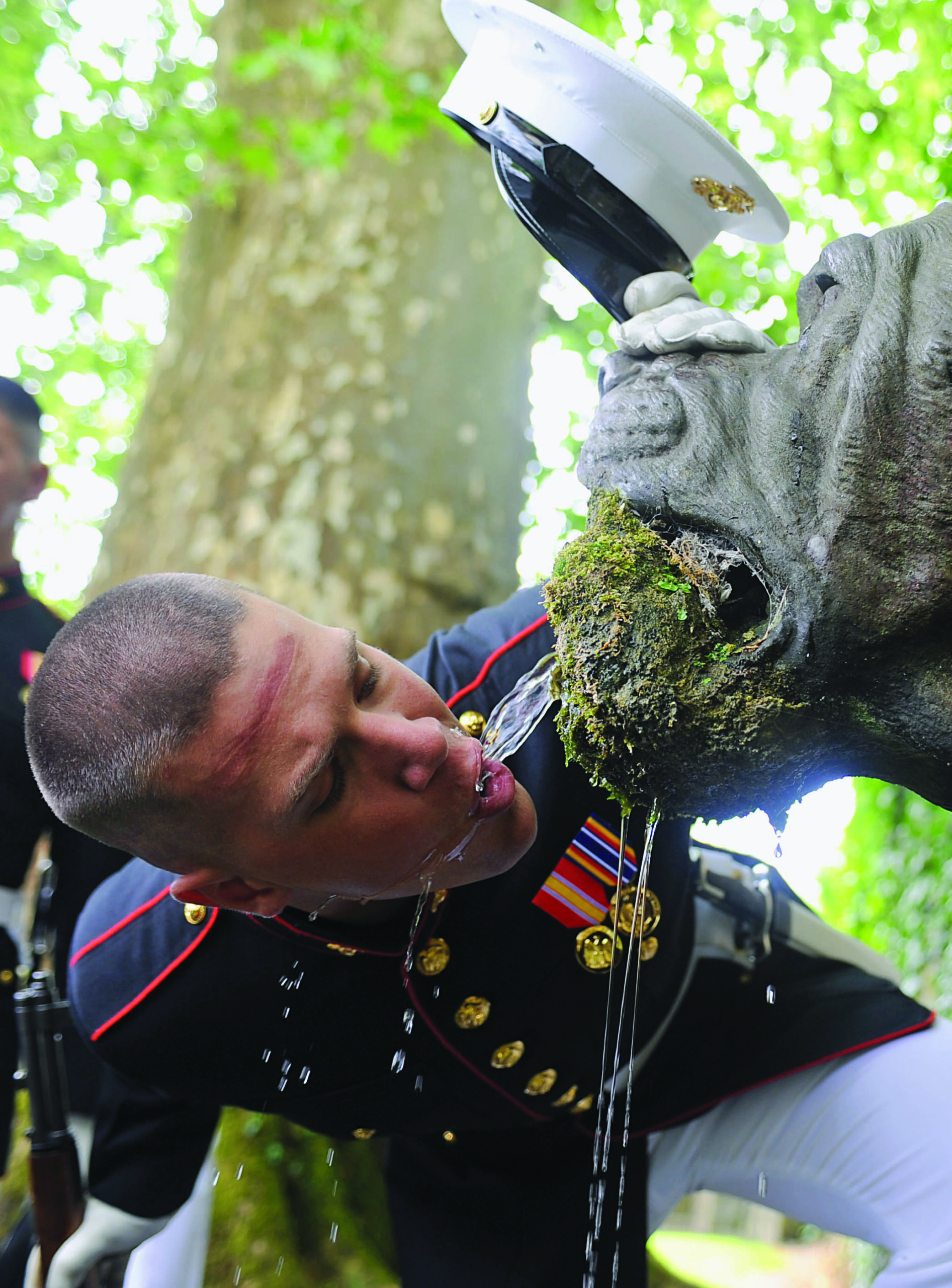
Return With the Elixir: The Psychology of Pilgrimages to the “Devil Dog” Fountain
By: Heather A. Warfield, Ph.D.Posted on May 15, 2024
A shuttle van rolled to a stop across the street from the Belleau Town Hall. Out of the side door emerged an elderly gentleman, hunched over, his physical frame sharply contrasted by the fierce resolve propelling him forward. Protruding from his bowed head was a red hat emblazoned with a vibrant yellow USMC.
His eyes rose to meet mine as I introduced myself and he waved his hand for me to follow him. The 82-year-old man was named James, and he told me he had been a recruit at Parris Island in 1959. He had dreamed of coming to Belleau Wood for over six decades. With his health in decline, it was now or never. Earlier in the day, James and his wife walked through Belleau Wood with the intent of “walking in the footsteps of those heroes from 1918.” James was adamant that their day end with a visit to the “devil dog” fountain.
It was clear there was a lot riding on this moment, and he wanted it to unfold exactly as he envisioned. We walked to the iron gate, and after a woman from the local museum had unlocked it, James slowly pushed it open with his cane. He beckoned his wife to join us, and the three of us walked into the old farmyard. When he saw the fountain, James whispered, “It all makes sense.
This is why we are the devil dogs. I knew we earned this title from the Germans in World War I, but now it all makes sense. I’m here because I’m a Marine.”
James hobbled toward the fountain. His wife held his right arm, stabilizing him as he leaned forward to position his head near the water trickling out of the dog’s mouth. He removed his hat, closed his eyes, and craned his neck to drink from the fountain. He paused with his eyes closed, then turned to his wife and said, “I’m done. It’s complete.” His face was splashed with water droplets. He shuffled back to the van and climbed into his seat. After a few minutes, his wife joined him and we waved goodbye as the van drove up the hill. I was left to ponder what I had witnessed—and to reflect on James’ words, which seemed to imbue a profound sense of meaning. He hinted at a lifetime of reasons that motivated him to make a pilgrimage to Belleau Wood and the bulldog fountain.
The fountain positioned him in a line of continuity existing within a sacred landscape. It reaffirmed an overarching narrative that as an individual Marine, James existed inside the collective. He and the Corps were one.
I’m here because I’m a Marine.
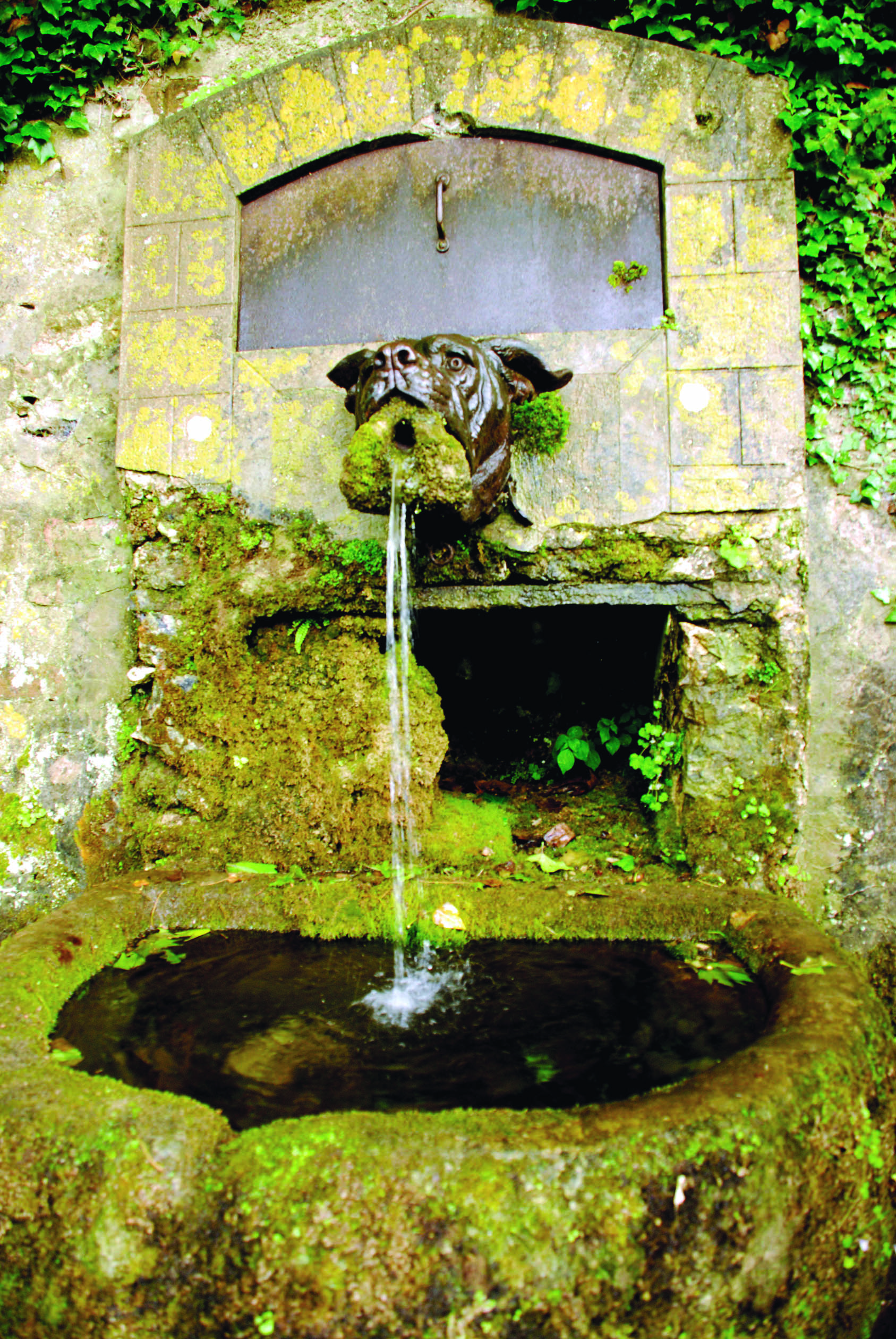
History of the Fountain
The Marine Corps has long understood the power of place and the importance of inculcating a sense of connection to hallowed ground. Servicemembers of all branches are tied to particular places, but Marines are collectively tied to the same places: Belleau Wood, Iwo Jima, Chosin Reservoir, Khe Sanh, Fallujah. This list of sacred places includes the devil dog fountain, which has become synonymous with Belleau Wood. However, because Marines were never in this exact location in 1918, the site’s prominence is not grounded in historical events. Rather, it emerged from the confluence of geographic proximity to Belleau Wood, individual and group identity, rituals and rites of passage, personal relationships, devotion, and collective memory. The site is an exemplar of how once-insignificant places can evolve into pilgrimage sites—and of the symbiotic relationship that emerges between sacred sites and pilgrims.
The fountain is located inside the village of Belleau on private property, formerly the 16th century chateau built for the Graimberg family. The current owners are descendants of Alphonse Paillet, who, in 1842, purchased the chateau, along with most of the hunting preserve known as Belleau Wood. Paillet sold Belleau Wood to the Belleau Wood Memorial Association in 1923, and it was dedicated as a shrine to the American Expeditionary Force. The family retained the chateau ruins and have been an integral part of the growth of pilgrimages to the site. The fountain is sourced by a spring-fed aquifer that supplies water to the entire area.
The sculpted bronze bulldog head is more accurately a Dogue of Bordeaux, a hunting breed that gained popularity in France in the mid-to-late 19th century. This particular fountain was used inside the farm area of the chateau grounds and is an unlikely structure to emerge as a sacred site. However, its proximity to the battlefield and the significance of the bulldog coalesced into the birth of a Marine Corps shrine. Visits to this shrine are a relatively recent phenomenon, as Marines were not in the village of Belleau during WW I. There is a possibility that a Marine may have been held as a prisoner of war or treated in the German first aid station under the chateau. But, despite this, there are no accounts of Marines drinking from the fountain during the war.
The historic silence on the topic of the bulldog fountain is conspicuous given its current prominence. It is particularly noteworthy because of the number of fountains established by Americans as living memorials after WW I, such as the fountain on Belleau’s main road that is dedicated to the memory of soldiers from Pennsylvania who died in Belleau Wood. There is no mention of our fountain in the writings about Belleau visits to include the 1920 Knights of Columbus pilgrimage, the dedication of Belleau Wood in 1923, or the 1929 reconstruction of the church that also serves as the U.S. Army 26th “Yankee” Division memorial.
Brigadier General James Harbord, USA was incensed by the location of this memorial and released a number of press statements asserting that Belleau Wood belonged to the Marines. Had the fountain been important to the Marines, this would have been a perfect time to emphasize their connection not only to Belleau Wood but to the village of Belleau. Gold Star Mothers also visited the area as part of the U.S. government funded pilgrimages of 1930-1933, and there are no written or photographic records of them visiting this particular fountain.
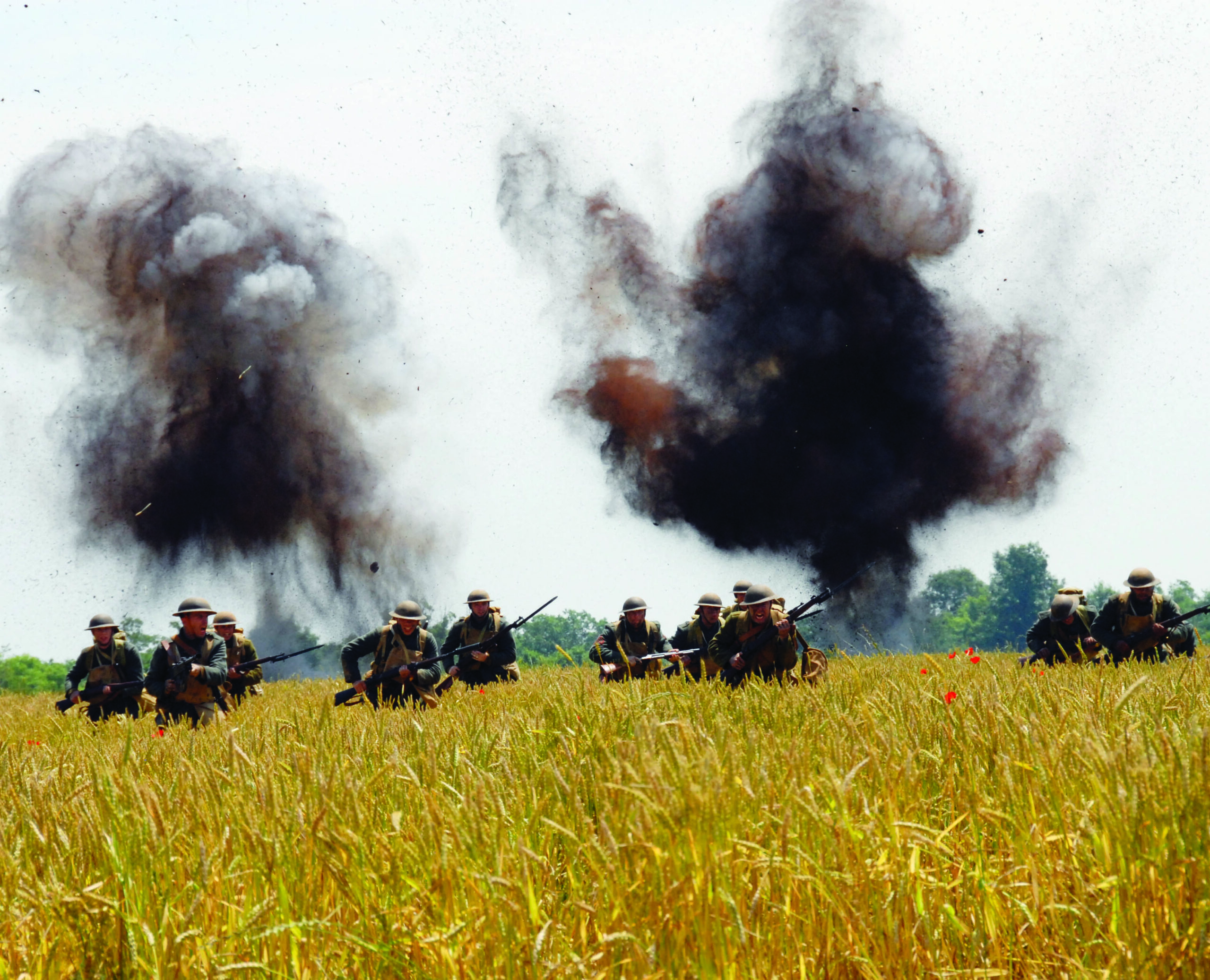
After World War II, veterans of both wars continued visiting the area, and the Yankee Division veterans again paid for repairs to the church, which was rededicated in 1953. Also visiting during this time was 20th Commandant of the Marine Corps, General Lemuel Shepherd. He was concerned that people were forgetting the contributions of Marines in Belleau Wood and initiated a plan to erect a monument, which was dedicated in 1955. It seems likely that Shepherd, along with other dignitaries, would have paid a visit to the fountain had there been an established Marine Corps connection to the site. The following decades reflect a similar lack of attention.
Based on testimonies from Belleau residents and press pieces from the 1980s, it was sometime during this decade that Marines began to visit the village of Belleau and the fountain as an extension to Belleau Wood itineraries. In the November 1988 issue of Marine Corps Gazette, author Agostino von Hassell described Marines visiting the devil dog fountain and proposed an interesting rationale for why Marines were connected to the village of Belleau. He referenced an account wherein the Germans occupied Belleau in 1914 and encountered the “Hounds of Belleau” inside the chateau. During the subsequent fighting in June 1918, the Germans recalled their first skirmish in Belleau, which resulted in the devil dogs moniker. On July 15, 1990, Boston Globe sportswriter Bud Collins asserted that the Marines had bivouacked in the former farmyard of the chateau during the war. This is particularly interesting given the fact that the date of Collins’ visit to the location corresponded to the dates in 1918 when the Yankee Division liberated the village.
Despite the historical inaccuracy of the Marines’ connection to Belleau, both authors linked fragmented pieces into one integrated framework. From this point, the village of Belleau was subsumed into the Belleau Wood narrative and fused together as one place within the collective memory of the area. This is illustrated by a conversation I had with a veteran Marine visiting Belleau Wood, who stopped me to inquire about the location of the fountain inside the woods. This man had actually been at the fountain and inside Belleau Wood in the early 1990s with a group from The Basic School but had forgotten the sites were geographically separated. At some point in the decades following his visit, his individual memory of the fountain’s location had merged with the collective memory of Belleau Wood.
While Belleau Wood had been hallowed ground since 1918, the subsummation of Belleau into Belleau Wood was cemented by 31st Commandant General Charles Krulak during his 1997 and 1998 visits. Gen Krulak’s personal connections to the area ran deep—he grew up hearing about the battle from his godfather, General Holland Smith, who had seen action at Belleau Wood—and these visits sacralized the oneness of the landscape in four significant ways. First, he chose the battlefield as the setting for the 222nd Marine Corps Birthday film. Like a prophet standing in the wheatfield, with one arm seemingly reaching back to WW I-era Marines and the other arm extended to future generations, Gen Krulak passionately spoke of continuity, identity, and shared vision. He also effectively used water as a connective motif by saying Belleau Wood was “like a river that runs through all Marines and all Frenchmen … rippling through our souls, renewing us, sustaining us and fortifying us for the trials to come.”
Secondly, Gen Krulak was photographed drinking directly from the devil dog fountain, giving a visual template for how future Marines would engage with the site. Third, he referenced his visit to Belleau Wood as a “pilgrimage of great personal meaning” and emphasized the importance of reenacting the journey of the 1918 Marines. Lastly, Gen Krulak acknowledged the local residents by presenting the fountain landowners with a Certificate of Appreciation, a powerful indicator of the importance the Corps placed on the site.
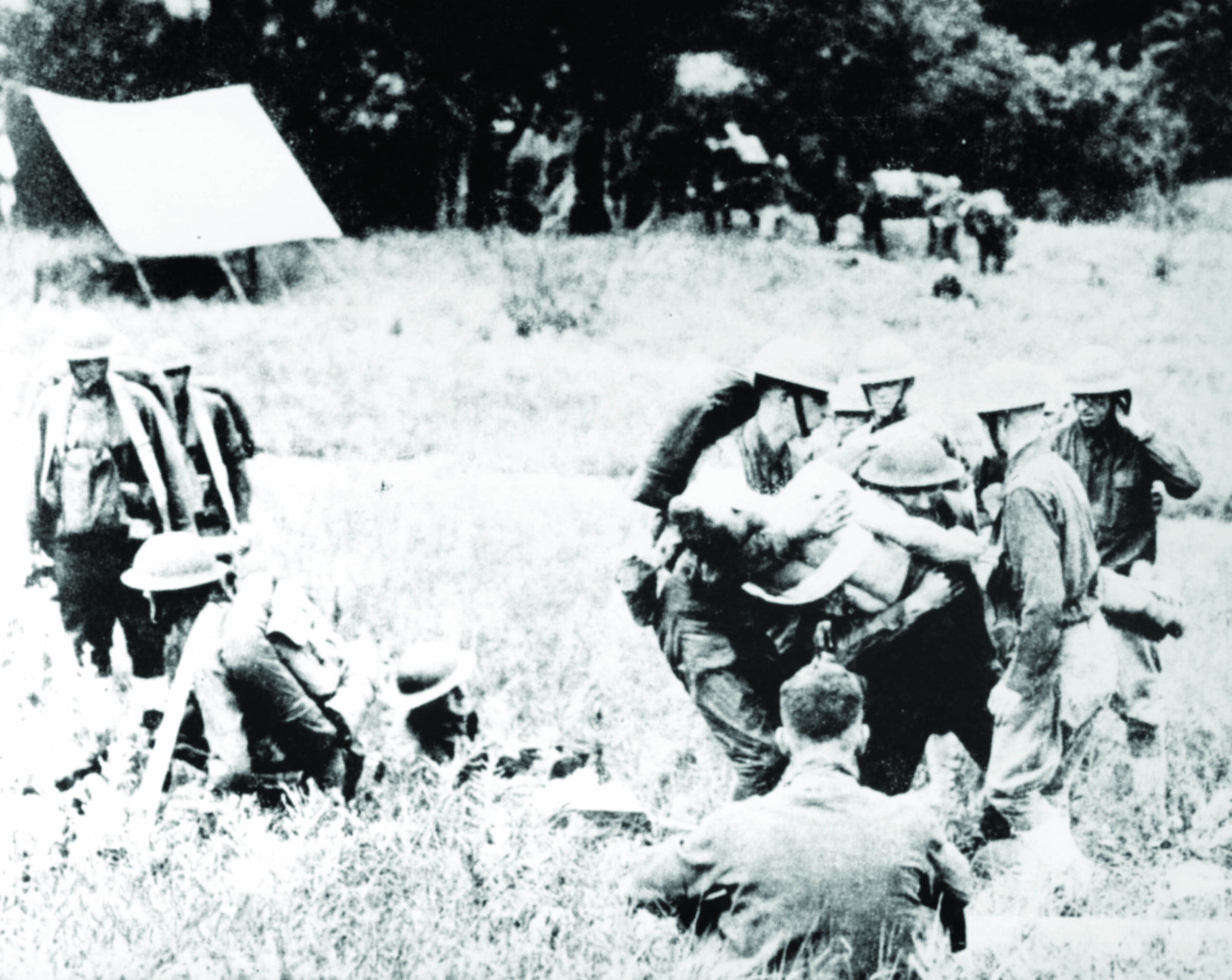
Current Practices at the Fountain
The devil dog fountain’s emergence as a sacred site is concurrent to the growth of pilgrimages worldwide. The practices there mirror those at other sacred sites involving wells or fountains. These places are often associated with healing properties, miracles, or divine connections, which makes them focal points for spiritual practices and pilgrimages. Pilgrims and visitors come to these wells seeking physical, emotional, or spiritual well-being and either ingest the water or immerse themselves in it. Over time, stories and legends associated with such fountains get passed down through generations.
Like other sacred wells, the bulldog fountain is a center point of gathering for those who share a common identity and has become an important site for rituals and rites of passage, including reenlistments, promotions, and retirements. Moreover, the fountain shares another characteristic with other pilgrimage sites: an element of challenge or difficulty to access. The courtyard gate is locked and knowing how to access the key becomes part of the experience and affirms a sense of exclusivity.
I spoke to a Marine sergeant who told me she had waited her entire life to be at the fountain. The fact that she was stationed in Europe was a dream come true, and being at the fountain was her sign that she was in the right place at the right time. She attributed her good fortune and life trajectory to the Marine Corps and was eager to send photos to her family and friends to show them how she made it to the fountain, knowing how proud they would be.
Another Marine I spoke to, a captain who was a prior enlisted Marine, told me being at the fountain reminded him of the yellow footsteps at PI and how he was walking in the footsteps of Marines from 1918 and taking his place among all Marines. He said that he felt a great deal of responsibility to honor the Marines of the past.
It is customary for Marines to drink directly from the fountain rather than filling a canteen or bottle to drink from. Either during the initial drink or the subsequent one, most Marines are photographed in the same pose as Krulak in 1998. If they are part of a group, they will often flank the fountain for a photo. These photos are subsequently posted on social media with the hashtag #BelleauWood, further cementing the oneness of the two places.
The water’s meaning has evolved over time, too. Marines drinking from the fountain in the 1990s focused on the power of the water to extend one’s professional life in the Corps. Now, it is said that the water extends one’s physical life for 20 years. It is also considered the element that links all Marines to one another. Marines drink the water for those at Belleau Wood, for the current Marines, and for future Marines. Many Marines report taking home bottles of water from the bulldog fountain in the same manner as pilgrims do from other sacred wells. These bottles are treasured artifacts that form part of a collection that may include sand from Iwo Jima or one of the Normandy beaches.
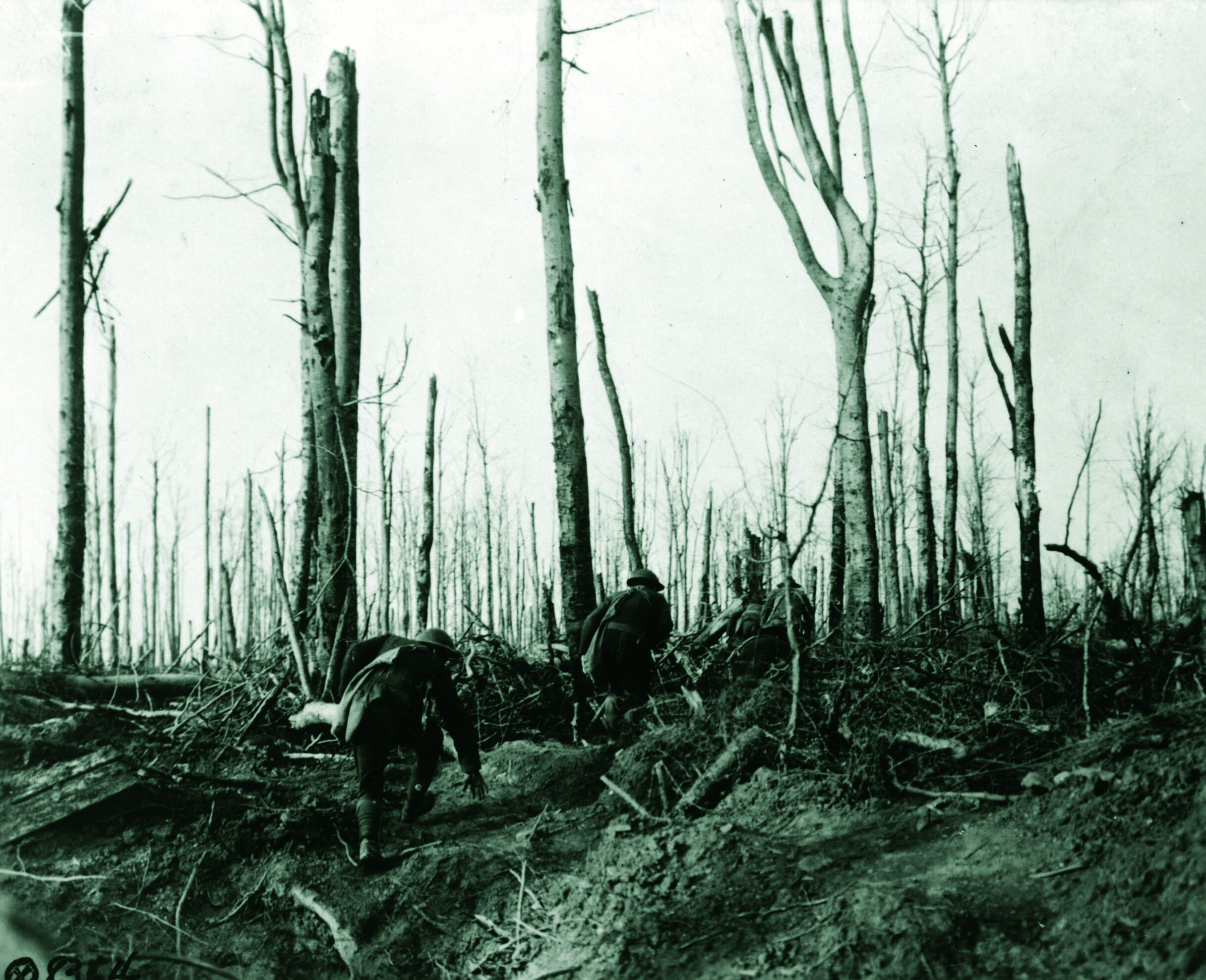
Not all visitors coming to the fountain are Marines; others such as civilians and non-USMC servicemembers frequent the site. U.S. Army and National Guard personnel visiting the fountain often recount contested battle histories and the evolving collective memory of the war. In many ways, this reinforces the fountain’s status as a pilgrimage site—contested narratives always characterize such places. The long-standing interservice rivalry between the Marine Corps and the Army is also a point of dialogue, with a particular emphasis on WW I. Soldiers often remark that the Marines were never in that location and jest that they will post photos in front of the fountain on social media with messages related to historical accuracy.
There is also a sense that the Marine Corps has systematically removed the Army’s presence in the Belleau Wood narrative, and one soldier told me that the Corps was “doing what Marines do and making everything about themselves.” Soldiers visiting the fountain who know about the Yankee Division’s liberation of the village of Belleau also recount the actions of July 1918. In addition, they point out the weather vane on top of the nearby barn, which depicts a Yankee Division soldier with his boot permanently kicking east, symbolizing pushing the Germans out of Belleau.
There is also a local impact resulting from the prominence of the site. The museum across the street, opened in 2008, retains the key for gate access and now has vessels for the water, similar to other holy wells like Lourdes. Local guides have incorporated a stop at the fountain as part of battlefield itineraries in the area. The fountain landowners remain central to the site and fund ongoing maintenance and access for ceremonies and cultivate personal connections with the diplomatic and military communities in France.
Memorial Day
The steady stream of Marines visiting the Belleau area rises to a groundswell during the Memorial Day weekend. There is a growing list of ceremonies for the weekend occurring across multiple sites, to include the German cemetery and the village church where a Catholic mass is held on Saturday evening. The recent inclusion of Marine Corps participation in this service is conspicuous due to its overtly religious nature, indicative of the evolution of pilgrimages in Belleau.
During the 2023 service, there were contributions by French clergy members, local residents, and American military dignitaries. During the sermon, the priest referenced “martyr Marines” who died in Belleau Wood, which is interesting given the fact that the church itself is a memorial for the Yankee Division. During this service, Marines inhabit a space that was paid for by the sacrifices of their brothers-in-arms in the Yankee Division. For the locals, though, these Marines seem to personify the names of the war dead flanking the church walls. The Yankee Division soldiers, who liberated the village of Belleau, seem to have been reborn as Marines, a nod to the Corps’ powerful influence on the collective memory of the area in WW I.
On Sunday, the culminating ceremony, infused with grand military pageantry, occurs at the Aisne-Marne American Cemetery. Similar ceremonies take place at all American Battle Monuments Commission cemeteries in France and all of them include military representation. However, the ceremony at Aisne-Marne is palpably “Marine Corps” in choreography, presence, and tenor. The list of distinguished guests continues to grow and is evidence of the increasing importance ascribed to the ceremony by French military and government officials. Moreover, the German Army has a burgeoning presence, and several German soldiers I spoke to shared that they were there to honor the war dead of “our allies” and focus on reconciliation.
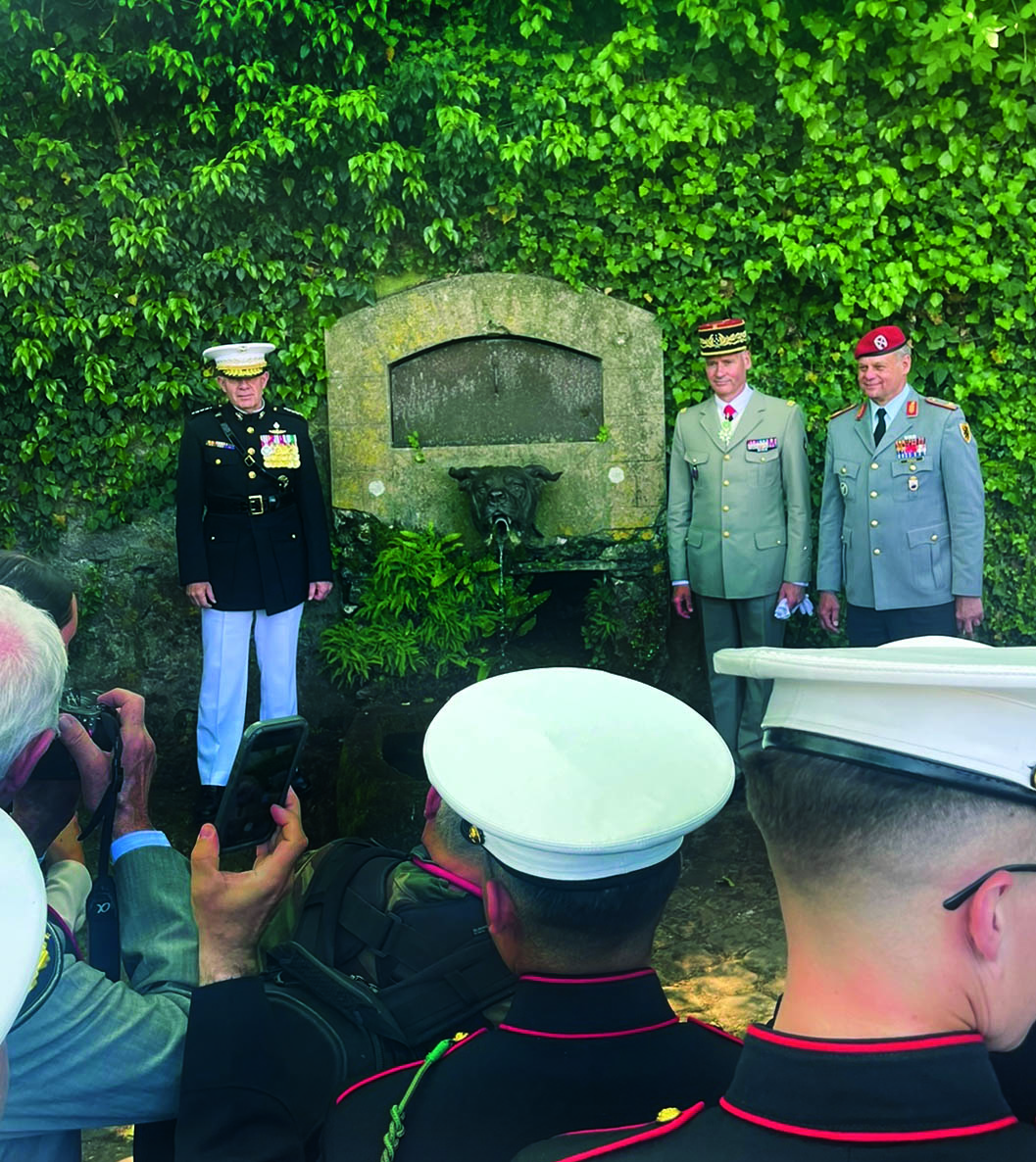
The Marine Corps understands the power of place, and the Memorial Day ceremony demonstrates a superior grasp of symbolism, ritual and narrative. Ceremony attendees from many countries fill the parade ground, and their gazes are initially fixed on the Memorial Chapel, ascending as a stark reminder of the human costs of war. Behind the chapel is Belleau Wood. Prior to the start of last year’s ceremony, visitors watched the Commandant and Sergeant Major of the Marine Corps descending from Belleau Wood, shoulder to shoulder with the Chief of Staff of the French Army and a German Brigadier General. Not only was this a powerful symbol of reconciliation between former enemies, it was also a reminder that the Marine Corps, which had been untested in the conflicts of WW I, matured inside the primordial darkness of Belleau Wood and emerged victorious.
The speeches given by dignitaries mentioned the sacrifice and loss of life in WW I. This reality was made more poignant by the setting, which includes over 2,200 graves of servicemembers who died during the war. Death and burial are tangible at places like this, and the proximity of the cemetery to the battlefield creates an immediate sense of the gravitas of the toll of war. The entire Memorial Day ceremony was a well-choreographed display of order, discipline, and precision that sharply contrasted the chaos and carnage of 1918.
As the ceremony ended, hundreds of attendees made a procession through the town, down the main street, and into the courtyard for a reception at the devil dog fountain. Like other pilgrimage processions, an amalgam of people moved together toward the sacred site. It was even more remarkable given the blending of military ranks within close proximity, which would not occur in any other setting. The climactic event was Gen David H. Berger’s arrival at the fountain, where he gave a speech thanking the local hosts, allies, and partners and mentioning the “sacrifices of those who fought here at Belleau Wood.” He posed for a photo with the other generals, who represented the military alliance amongst the United States, France and Germany. He reenlisted a Marine during the reception as well.
Memorial Day weekend is also about the local inhabitants, often silent stakeholders in the pilgrimage saga of Belleau Wood and Belleau. During this weekend, the Belleau locals are co-creators of the experience; they renew personal relationships with Marines and other visitors and have a sense of agency in decision-making about the ceremonies. This agency is increasingly important as the Aisne-Marne American Cemetery has been designated as a UNESCO World Heritage site. The added notoriety and people visiting these sites impacts the locals and, like other pilgrimage sites around the world, their voices are often marginalized. Many of the families have lived in the area since before WW I, and they have their own strong attachments to the sites. These attachments often reflect a different type of priority, function, and meaning than for American pilgrims and visitors. During the Memorial Day weekend, the locals also host Marines in their homes, and the relationships forged over decades are treasured by all involved. Finally, the fountain landowners have the opportunity to remind visitors of their benevolence and hospitality, while also ensuring a seat at the table regarding the future of the fountain.
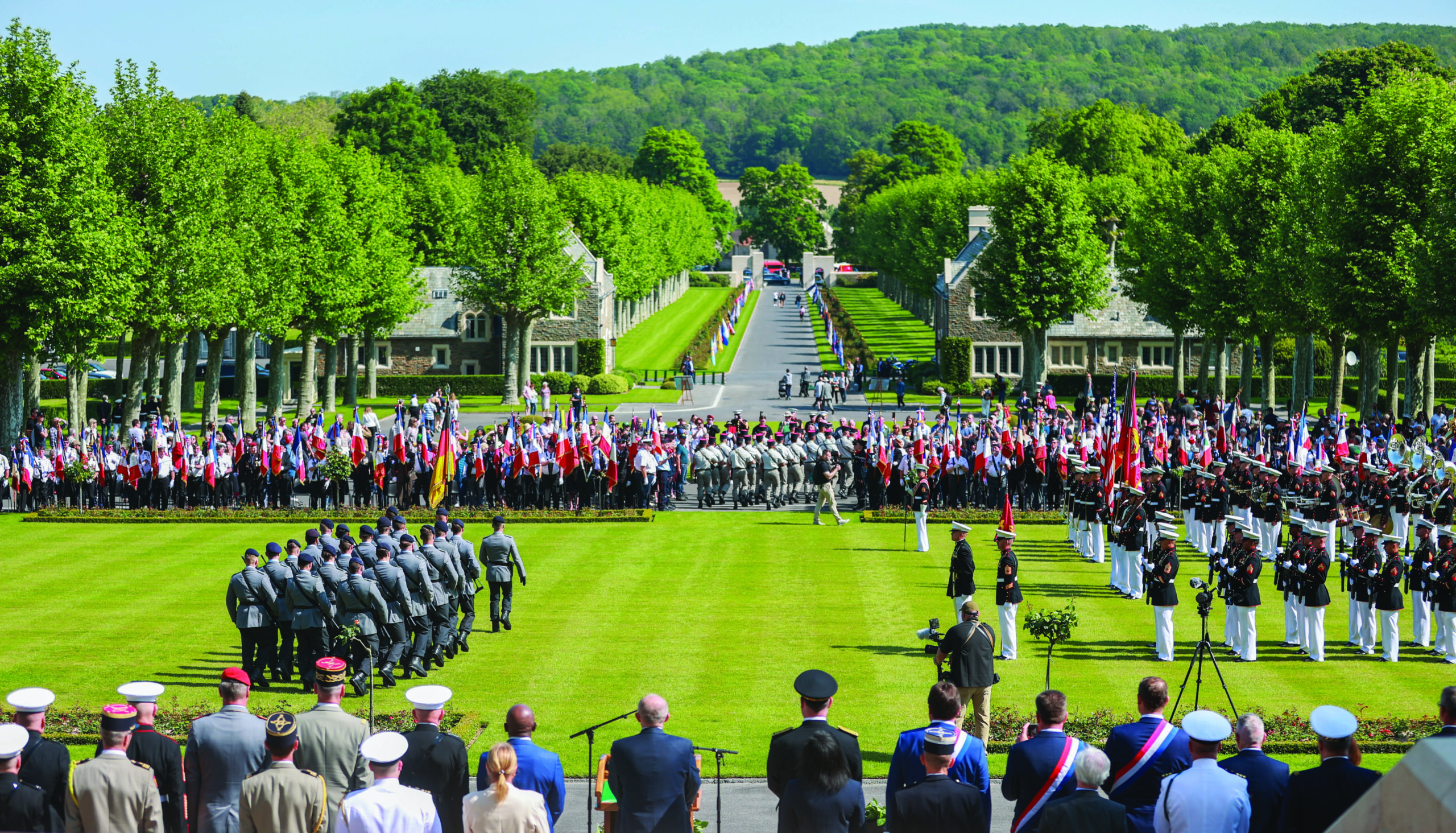
The Hero’s Journey
The Marines fighting in Belleau Wood in 1918 engaged in a hero’s journey mirrored by an archetypal psychological process. They left their ordinary world for a call to adventure and reached a place known as “Hellwood.” After fighting with the enemy inside this Hell, they were bruised and battered; many were dead. The survivors emerged and returned home with the elixir of victory. Their reality set the stage for a new type of journey: walking in their footsteps through reenactment. Such reenactments began as early as 1919 as pilgrims flocked to Belleau Wood to follow in the footsteps of the heroes. And it was important for them to retrace the steps exactly as the events unfolded in June of 1918. However, the reenactments could only reach the resurrection stage of the archetypal Hero’s Journey through the practice of calling to memory the Marines and their actions—they could not return with the elixir of victory as their forebears had.
Gen Krulak tapped into this need for the completion of the quest in his 1997 video. He provided a pilgrimage template as he moved from the wheatfield into the Aisne-Marne American Cemetery, while recalling the people and events of the battle. He was then photographed at the devil dog fountain drinking directly from the source of the water. This imagery sent a powerful message that pilgrimages were a sanctioned part of the Marine Corps experience and further cultivated the idea that places connected to the Corps could be spoken of in overtly spiritual terms. His use of the water motif provided further language to describe how Marines are connected to hallowed ground and that there is a life force that fuses all Marines together. The fact that the water originates from the same source as it did in 1918 carries deep spiritual significance. And Krulak’s language around renewal and rebirth set the stage for a shrine that could be visited and revisited by future generations of Marines seeking exactly that.
For James, the 82-year-old Marine veteran, his visit to the devil dog fountain was a moment of completion to the narrative of his life that opened at Parris Island. He was looking to reaffirm his place within the collective, and it must have been reassuring to know that the memory of past generations of Marines lives on at sites like Belleau Wood. In knowing this, there is the comfort that he will not be forgotten. He had walked the battlefield and communed with the Marines of 1918—and the last step was that he needed to ingest the water from the sacred fountain. Within the fusion of the individual with the collective, I am here because we were here is interchangeable with we are here because I am here. “Here” is Belleau Wood, which now includes Belleau—their oneness understood through how average places evolve into sacred spaces through their relationship with pilgrims.
James was a pilgrim reenacting the Hero’s Journey, and his final quest was to return home with the elixir from the devil dog fountain. He found completion, belonging, and continuity with the Marines of the past and the Marines of the future. He became fused with a landscape that emerged as hallowed ground. It is quite appropriate that Belleau means “beautiful water”—and the elixir pilgrims seek is the essence of the place.
Author’s bio: Heather A. Warfield is a professor, researcher, author, and consultant with subject matter expertise on pilgrimages to the Western Front of World War I. She was a 2022-2023 Fulbright France Research Scholar at the University of Lille where her research focused on post-war pilgrimages to Belleau and Belleau Wood. While in France, she contributed to a number of staff rides and educational experiences for U.S. military groups. In addition, she is the series editor of Pilgrimage Studies and is the co-editor of the book “Pilgrimages to the Western Front of World War I: Historical Exemplars & Contemporary Practices,” to be published in 2024. Her book on pilgrimages to Belleau and Belleau Wood is forthcoming in 2025.




